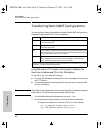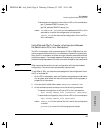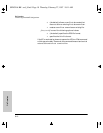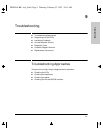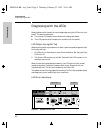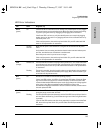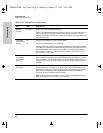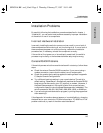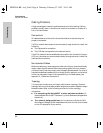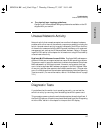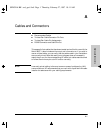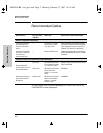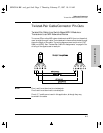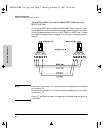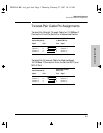
9-6
Troubleshooting
Installation Problems
Troubleshooting
Cabling Problems
A high percentage of network problems are due to faulty cabling. Cabling
problems usually result in the failure of a switch to connect to a network, a
hub, or the end nodes.
Connections
All cables attached to the switch should be checked to see that they are
properly connected.
If a PC or network device cannot communicate through the switch, check the
following:
■ The cable and its connection
■ The LED that corresponds to the network device
If the PC or network device establishes a connection with the switch (the port
LED is on), but does not communicate reliably through the switch, check the
cable and the connection.
Non-standard Cables
Miswired cables may cause numerous network collisions, and can seriously
impair network performance. Before connecting cables into your network,
you should verify that they comply with the applicable standards. For a list of
compatible cables and a description of the pin-outs for each port on the switch
(which can be used to confirm the compatibility of unlisted cables), see
appendix A, “Cables and Connectors”.
Topology
It is important to make sure you have a valid network topology. Common
topology faults include excessive cable length and excessive repeater delays
between nodes. Refer to the following sources for further topology
information:
■ For connecting the Switch 800T to other switches and hubs: HP
AdvanceStack Switch 800T Connectivity Quick Reference (shipped with
the switch)
■ For network design guidelines: An Introduction to Ethernet LAN
Switches and Designing Switched Networks, both of which are included
on the CD shipped with your switch
SEDONA.BK : sed_9.fm5 Page 6 Thursday, February 27, 1997 10:11 AM



